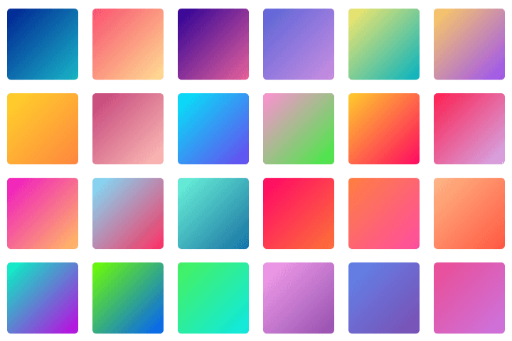
- Articles
- Creating gradient color

Creating gradient color is a great way to add depth and dimension to your mobile or web applications. In this article, we will explore how to create gradient color in Kotlin, ReactJS, Swift, Flutter, and React Native.
Creating Gradient Color in Kotlin
Kotlin is a programming language used for developing Android applications. To create a gradient color in Kotlin, we can use the GradientDrawable class, which allows us to create a gradient using multiple colors. Here's an example:
val colors = intArrayOf(Color.RED, Color.GREEN, Color.BLUE)
val gradient = GradientDrawable(GradientDrawable.Orientation.LEFT_RIGHT, colors)
In the example above, we define an array of colors and pass it to the GradientDrawable constructor along with the orientation of the gradient. We can then set this gradient to the background of any View.
Creating Gradient Color in ReactJS
ReactJS is a popular JavaScript library used for building user interfaces. To create a gradient color in ReactJS, we can use the CSS linear-gradient property. Here's an example:
<div style={{backgroundImage: 'linear-gradient(to right, red, yellow, green)'}}>
<h1>Gradient Color</h1>
</div>In the example above, we set the backgroundImage style property to the linear-gradient function, passing in the direction of the gradient and an array of colors.
Creating Gradient Color in Swift
Swift is a programming language used for developing iOS applications. To create a gradient color in Swift, we can use the CAGradientLayer class, which allows us to create a gradient using multiple colors. Here's an example:
let gradientLayer = CAGradientLayer()
gradientLayer.colors = [UIColor.red.cgColor, UIColor.green.cgColor, UIColor.blue.cgColor]
gradientLayer.locations = [0, 0.5, 1]
gradientLayer.frame = view.bounds
view.layer.addSublayer(gradientLayer)Creating Gradient Color in Flutter
Flutter is an open-source mobile application development framework created by Google. To create a gradient color in Flutter, we can use the LinearGradient class. Here's an example:
Container(
decoration: BoxDecoration(
gradient: LinearGradient(
begin: Alignment.topLeft,
end: Alignment.bottomRight,
colors: [Colors.red, Colors.green, Colors.blue],
),
),
child: Text('Gradient Color'),
)In the example above, we set the decoration property of a Container widget to a BoxDecoration with a gradient property set to a LinearGradient. We also specify the direction of the gradient using the begin and end properties.
Creating Gradient Color in React Native
React Native is a popular JavaScript framework used for building mobile applications. To create a gradient color in React Native, we can use the LinearGradient component from the react-native-linear-gradient package. Here's an example:
import LinearGradient from 'react-native-linear-gradient';
<LinearGradient colors={['red', 'green', 'blue']} style={{flex: 1}}>
<Text style={{color: 'white'}}>Gradient Color</Text>
</LinearGradient>In the example above, we import the LinearGradient component and set the colors property to an array of colors. We also set the style property to a flexbox style and add a Text component as a child.
Conclusion
In this article, we explored how to create gradient color in Kotlin, ReactJS, Swift, Flutter, and React Native. Gradient color is a powerful way to add depth and dimension to your mobile
DOIT Connect
Empowering creativity with powerful online tools. Transform, optimize, and enhance your digital assets effortlessly.

